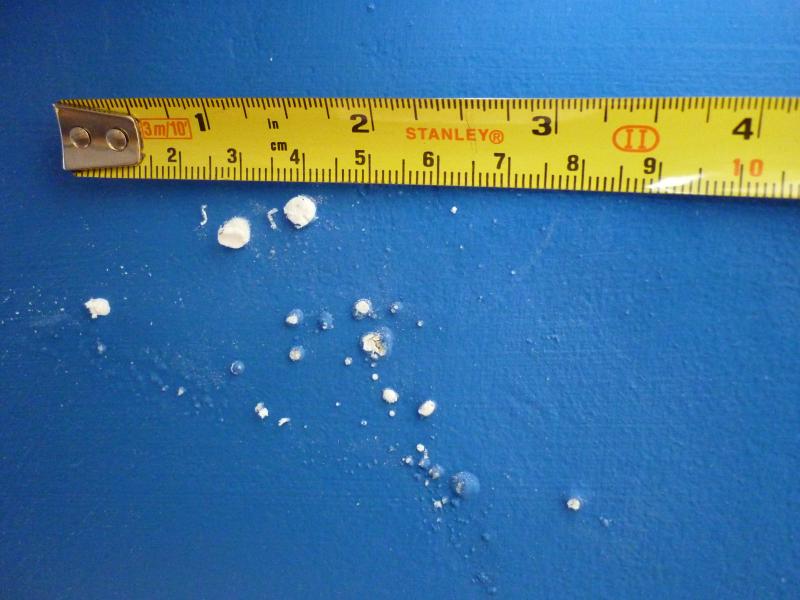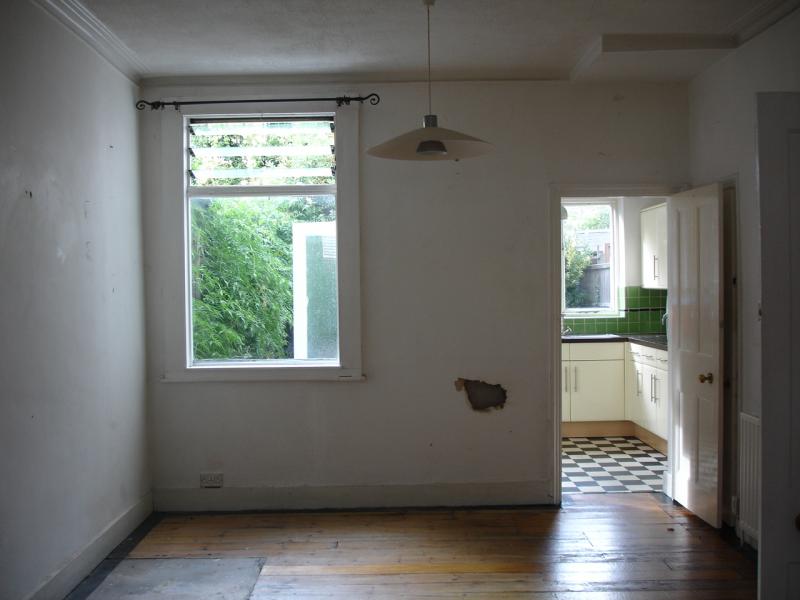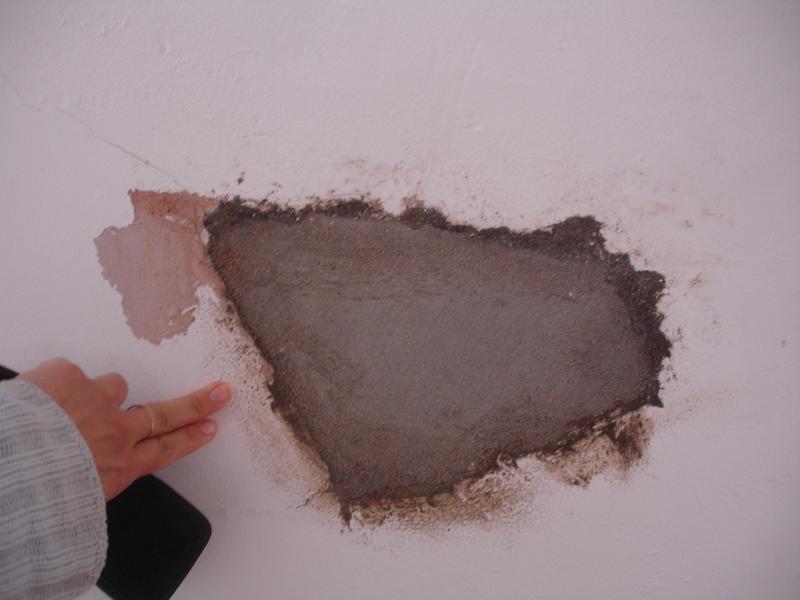hi there, wouder if someone can help.
i've got a nasty-looking patch of efflorescence on the wall of my c.1910 terraced house and I'm trying to work out what has caused it.
The wall in question is a loadbearing solid (ie not cavity) brick wall between the living room (suspended timber floor) and kitchen (cement screed). Both sides are plastered and painted. The efflorscence is on the living room side, and other the other side there's a radiator.
The worst bit (see pic) is about 8cm across and about 70cm from floor level. There's a surrounding patch of slight discolouration where further blisters are developing.
Causes.. Because of the radiator on the other side of the wall, my first thought was a plumbing leak. However, the water pressure hasn't significantly dropped. Can I rule out a leak?
The other, more sinister cause might be damp of some kind.
What can I do to find out the causes and work out what kind of remedial action is required?
thanks in advance,
Geraint
i've got a nasty-looking patch of efflorescence on the wall of my c.1910 terraced house and I'm trying to work out what has caused it.
The wall in question is a loadbearing solid (ie not cavity) brick wall between the living room (suspended timber floor) and kitchen (cement screed). Both sides are plastered and painted. The efflorscence is on the living room side, and other the other side there's a radiator.
The worst bit (see pic) is about 8cm across and about 70cm from floor level. There's a surrounding patch of slight discolouration where further blisters are developing.
Causes.. Because of the radiator on the other side of the wall, my first thought was a plumbing leak. However, the water pressure hasn't significantly dropped. Can I rule out a leak?
The other, more sinister cause might be damp of some kind.
What can I do to find out the causes and work out what kind of remedial action is required?
thanks in advance,
Geraint




